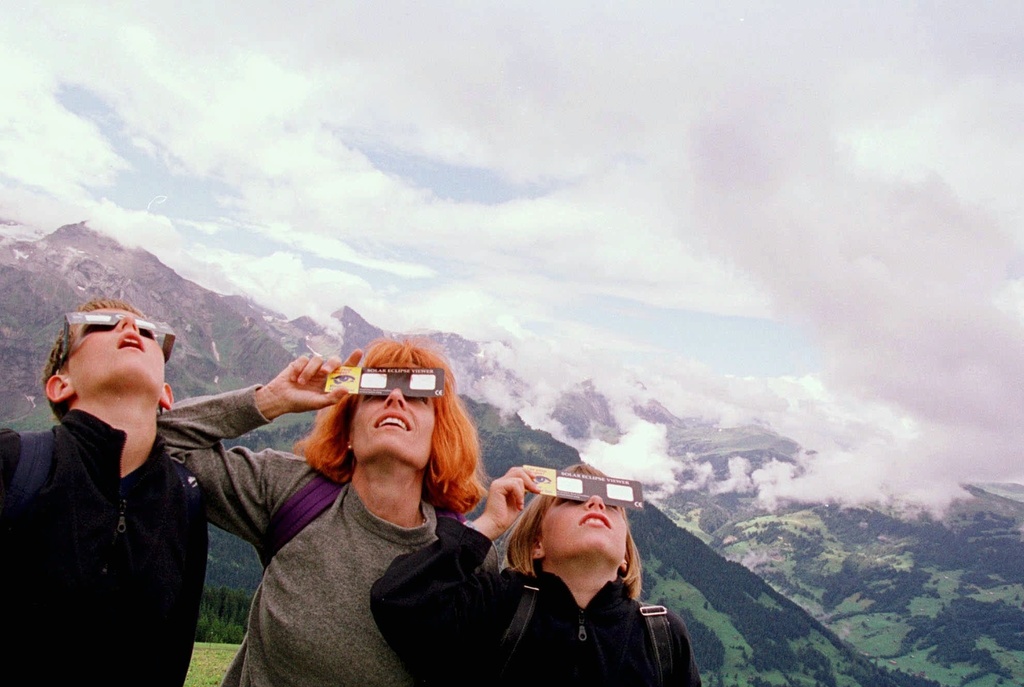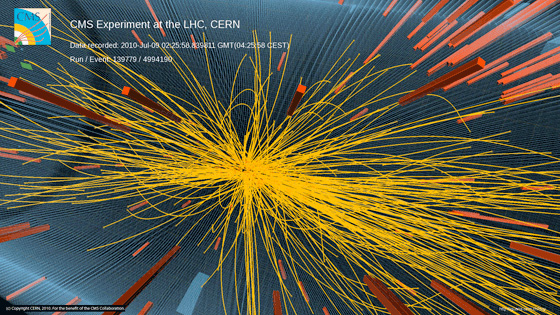Skygazers await partial eclipse

Observatories and amateur astronomers are gearing up for a partial solar eclipse, which will darken the sky over Switzerland on Tuesday.
Although not as spectacular as a total eclipse – when the sun is completely obscured by the moon – this degree of partial eclipse is relatively rare in Switzerland.
The eclipse will be visible in Switzerland – where 67 per cent of the sun will disappear – most of Europe, North Africa and central Asia.
The solar occurrence will be at its height at 9.09am in Geneva, 9.11 in Bern and 9.14 in St Gallen.
In no part of the world will this eclipse be total.
Amateur skywatcher Ross Bennie says eclipses like this one, when at least two-thirds of the sun are hidden behind the moon, will occur in Switzerland on average once every ten years between now and 2100.
The last eclipse with such coverage in Switzerland goes back to August 11, 1999, when the sun was almost completely covered by the moon.
The last partial eclipse, on August 1, 2008, saw only five per cent of the sun disappear.
Not the real thing
But it does not beat “the real thing” – the total eclipse – which occurs about once a year in the world and only around twice in 500 years in Switzerland.
Switzerland saw its last total eclipse back in July 1842.
“Compared to total eclipses, partial eclipses are hardly worth getting out of bed for, even if more than 90 per cent of the sun is obscured,” Bennie told swissinfo.ch.
Director of the St-Luc observatory Frédéric Mallmann agrees. “It is really dark only when the very last percentage of sun vanishes,” he said.
That final percent makes the whole difference.
Sylvia Ekström, who works at the Geneva Observatory, says a few years ago there was a 99 per cent eclipse in Spain; daylight remained and you couldn’t see the corona [outer layer of the sun’s atmosphere] lighting up, as you would do with a total eclipse.
Eyes adapt
“If you don’t pay attention, you may not even notice it,” Mallmann told swissinfo.ch.
Those who will look at the eclipse through special glasses or in an observatory will see a disc partially broken.
“If the skies are clear, you’ll see a red sun rising with a small but slowly growing ‘bite’ taken out of its right edge,” said Bennie, a self-confessed “eclipse geek”.
However, fog is on the forecast for western and northern Switzerland on Tuesday. Mallmann says that, in any case, to get a better look at the eclipse, you should try to go somewhere where there are no mountains blocking your view to the east.
“Our eyes adapt so well that for instance, if the light were progressively divided by two, you would not notice anything,” the scientist said.
Health warning
Although the eclipse is only partial, the Federal Health Office saw fit to issue a warning to those intending to gaze at the sky on Tuesday.
In a statement it spoke of the risk of retinal burns. In the worst case, infrared radiation can cause eclipse spotters to become partially or totally blind.
“Cardboard glasses are a good protection, but if eclipse spotting becomes a hobby, you may consider buying a solid pair of specialised glasses with mylar filters,” spokesman Beat Gerber told swissinfo.ch.
Normal sunglasses should not be used to look at the sun, although when wearing them, you do not feel the brightness.
Eclipse or no eclipse, if you look at the sun for too long, it is likely you will not feel the pain immediately, but after a few days you will experience pain and partial or total blindness.
Ancient history
Ekström says eclipses like this one do not lead to great scientific discoveries, unlike total eclipses.
The 1919 total eclipse is famous for validating Einstein’s relativity theory, which he formulated in 1915.
Nevertheless, the upcoming eclipse offers a link to ancient cultures and their observations of solar occurrences, Ekström says.
“It is amazing to think the Ancient Greeks could calculate when the next eclipses would take place,” she said.
It was they who invented the Antikythera mechanism, a machine made to calculate astronomical positions, which was recently proven to predict eclipses.
“Observing eclipses brings us back to this very old tradition of astronomical calculation,“ the expert said.
As for diehard eclipse spotters, they are always looking ahead, to the next major event. And many would travel to the ends of the earth for a few moments of totality.
“The furthest I’ve been is to Easter Island, but I am considering a trip to the North Pole in 2015,” Bennie said.
A solar eclipse occurs when the moon passes in front of the sun as seen from the Earth. The type of solar eclipse event depends on the distance of the moon from the Earth during the event.
Solar eclipses are relatively brief events that can only be viewed in totality along a relatively narrow track. Under the most favorable circumstances, a total solar eclipse can last for 7 minutes, 31 seconds, and can be viewed along a track that is up to 250km wide.
The region where a partial eclipse can be observed is much larger.
During a solar eclipse, the moon can sometimes perfectly cover the sun because its size is nearly the same as the sun when viewed from the Earth. A total solar eclipse is in fact an occultation while an annular solar eclipse is a transit.
The term is derived from the ancient Greek noun ékleipsis, which is derived from a verb meaning “to cease to exist”.
(Source: Wikipedia)
20.03.2015
10.06.2021
25.10.2022
29.03.2025
12.08.2026
02.08.2027
26.01.2028
01.06.2030

In compliance with the JTI standards
More: SWI swissinfo.ch certified by the Journalism Trust Initiative













You can find an overview of ongoing debates with our journalists here . Please join us!
If you want to start a conversation about a topic raised in this article or want to report factual errors, email us at english@swissinfo.ch.